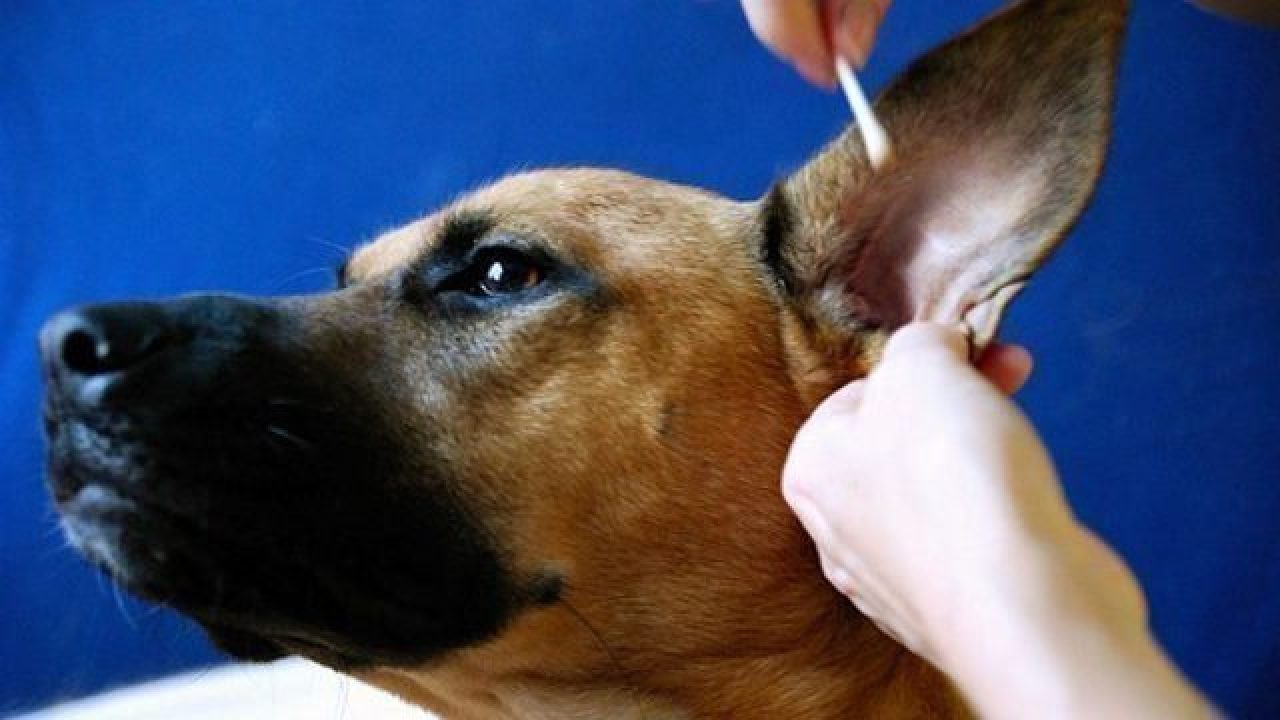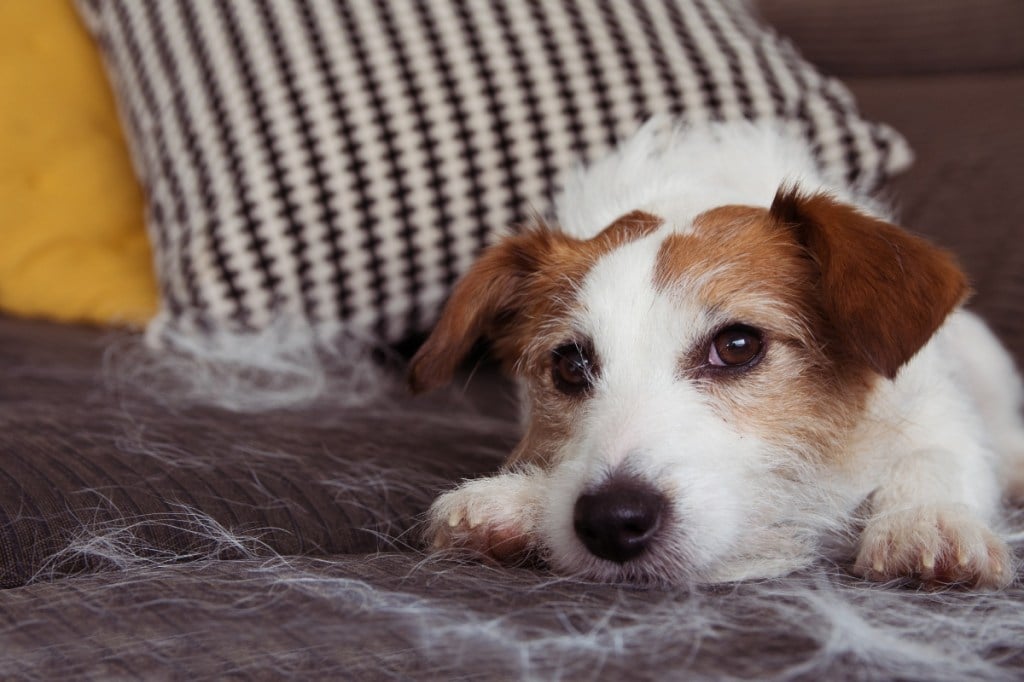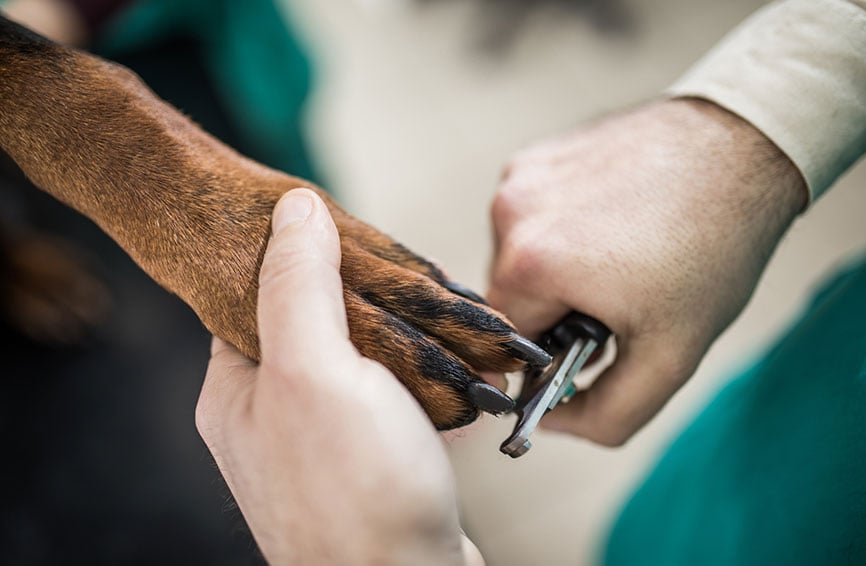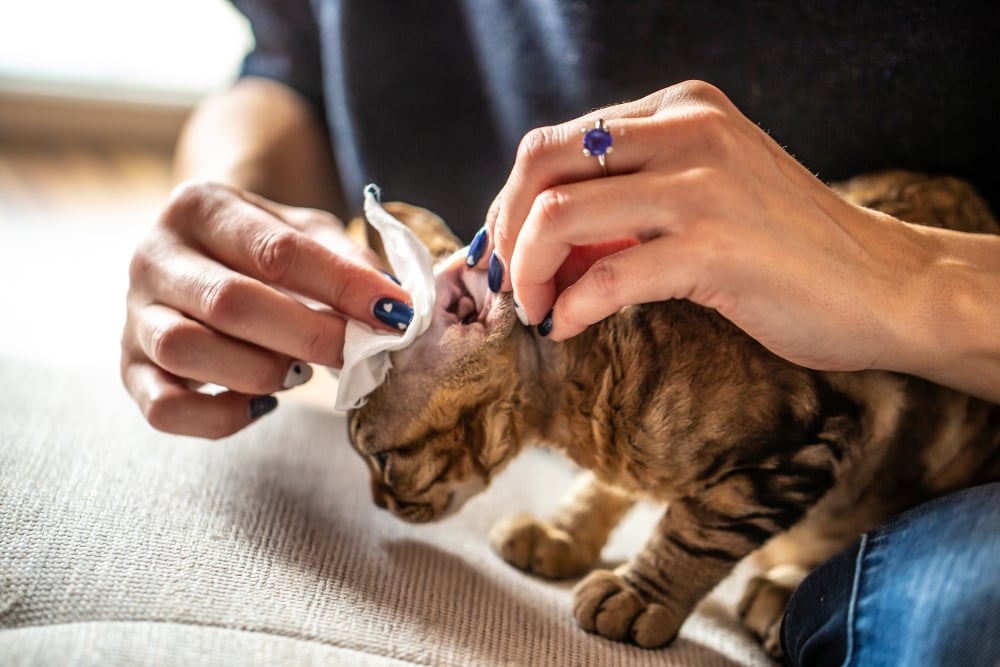Table of Contents
Proper grooming of your pets is essential; it can help prevent health issues and keeps your home fur-free. The ears are a sensitive part of your pet’s body, and can be difficult to clean. Without the proper knowledge, you can injure your cat or dog or cause the animal pain. Here are three simple steps to effortless ear cleaning in your cat or dog.
Tools and Supplies
- Pet ear wash solution
- Cotton balls or pads
- Q-tips
- Treats
1. Restraining Your Pet
Most animals don’t like having their ears cleaned and may wriggle around, making the job difficult. Calmly restraining your pet while still maintaining the animal’s comfort is important for both their safety and your own.
For cats and small dogs, place the animal in your lap on its stomach. Place your left forearm securely over the animal’s body, firmly grasping the jaw and head in your left hand. Gently pin the ear flap to the top of the head with your left thumb, leaving the ear canal open and visible.
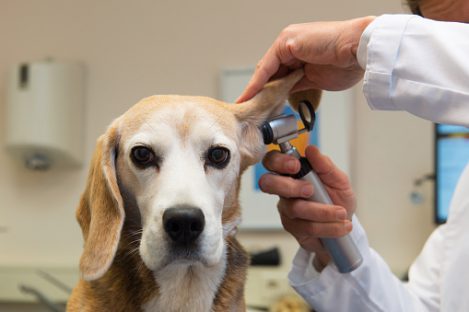
Larger dogs should be laid on a table or raised surface on their stomach. You should stand on the side of the table opposite to the ear you will be cleaning, with your upper body firmly placed over the dog. Wrap your left arm around the dog’s neck and use your left hand to expose the ear canal. With your right arm lying on the dog’s shoulder, clean with your right hand. Laying your dog on his or her side may also work for squirmy pets; lay your left arm over your dog’s neck, grasping the elbow closest to the table to restrain the dog. You can then pull back the ear with your right hand and begin the cleaning process.
It may be helpful and easier to have another person with you to calm the animal or help you restrain larger pets. Try to keep your cat or dog calm at all times, praising them and petting them after every cleaned ear. Giving your pet treats after the ordeal may help cheer them up. It’s essential that cleaning your pet’s ears not be a traumatic or stressful procedure; this will make further grooming sessions more difficult.
2. Observing the Ear
One purpose of grooming your pet is to inspect the animal’s skin and fur for any abnormalities such as redness, sores, or lesions. The outside of the ear should be completely covered with fur; patchy fur or irritated skin at the base of the ear or on the tip indicate excessive itching. After you pull back the ear flap, inspect the inside of the cat or dog’s ear. The skin should be a pale to medium shade of pink with none of the following:
- Black wax – This is an indicator of ear mites, small parasites that cause excessive scratching and head shaking in both dogs and cats.
- Swelling accompanied by warmth – If your pet has been over-itching the inside of their ear, an aural hematoma can result from the trauma. Minor surgery is typically required to relieve the swelling and reduce chance of infection.
- Foul-smelling discharge – Infections of the outer and inner ear are relatively common among pets. The discharge can be yellow or reddish-brown. Ear infections require antibiotics (either in oral or topical form), medicated ear washes, or possibly minor surgery; only your vet can give you the proper care.
3. Cleaning the Ears
Squeeze a few drops of ear wash onto the inside of the ear flap. Gently move the tip of the wash bottle a few millimeters into the ear canal and squeeze another few drops into the canal. Your pet may shake its head immediately after you do this, removing some of the wash. Massage the base of the ear to distribute the ear wash throughout the ear canal – most cats and dogs enjoy this part! Use cotton balls or pads to remove ear discharge from the ear flap. You can use q-tips to get into the ear’s crevices, but never stick a q-tip into your pet’s ear further than you can see. Just as in humans, excessive or too deep q-tip use can pack wax in the ear or even rupture the ear drum.
How Often to Clean
Groomers recommend you clean your pet’s ears at least once a month. Dog breeds with longer ears, such as spaniels and basset hounds, should have their ears inspected and cleaned bi-weekly, as they are more prone to contracting ear-related health conditions. If you feel uncomfortable cleaning your cat or dog’s ears, take them to a professional groomer.
Cleaning your pet’s ears is essential to prevent ear infections and parasites. The cleaning process can be painless if done properly; the important thing is to keep your pet calm and reward them after the procedure is over. If your dog or cat proves extremely resistant to having their ears cleaned, don’t force the issue and visit a professional groomer.
